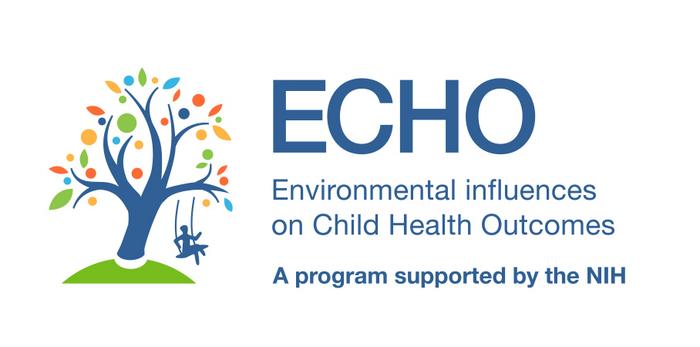A groundbreaking study emerging from the National Institutes of Health’s Environmental influences on Child Health Outcomes (ECHO) Program has unveiled alarming evidence that even minimal exposure to arsenic in public drinking water may adversely affect birth outcomes. This research challenges the long-standing assumption that arsenic levels beneath the federally mandated safety threshold are harmless to fetal development. Utilizing one of the largest cohorts studied to date, the investigation has linked low-level arsenic exposure to increased risks of preterm birth, lower birthweight, and overall smaller infant size relative to gestational age.
Historically, arsenic exposure has been a concern primarily in regions relying on private wells, where regulatory oversight is limited. However, this study shifts focus towards public water systems, which serve the majority of the U.S. population. Arsenic, a naturally occurring metalloid found in certain geological formations, can leach into groundwater as it interacts with arsenic-bearing minerals. Additionally, industrial processes and agricultural activities have exacerbated contamination in various locales, complicating the environmental health landscape.
The Environmental Protection Agency (EPA) currently enforces a maximum contaminant level (MCL) of 10 micrograms per liter for arsenic in public water supplies. Traditionally, this standard was considered protective against most health risks. The new findings from the ECHO Cohort suggest that this threshold may not be sufficiently protective for vulnerable populations, particularly pregnant mothers and their developing fetuses. Researchers found statistically significant correlations between arsenic exposure below the MCL and negative birth outcomes, urging a reevaluation of regulatory benchmarks.
.adsslot_Ny3FrhUJw5{width:728px !important;height:90px !important;}
@media(max-width:1199px){ .adsslot_Ny3FrhUJw5{width:468px !important;height:60px !important;}
}
@media(max-width:767px){ .adsslot_Ny3FrhUJw5{width:320px !important;height:50px !important;}
}
ADVERTISEMENT
The methodology entailed an extensive observational design encompassing nearly 14,000 mother-infant pairs across diverse geographic and demographic spectra. Arsenic exposure estimates were derived by integrating residential history data with publicly available water quality records rather than direct biological sampling. This exposure assessment approach, though indirect, allowed for large-scale population-level analysis while accounting for temporal and spatial variations in water quality and residential mobility during pregnancy.
One of the most striking aspects of the study lies in its examination of disparities across racial and ethnic groups. The data revealed consistent patterns linking arsenic exposure to adverse birth outcomes among White, Black, Hispanic/Latino, American Indian, Alaskan Native, Native Hawaiian, and Pacific Islander populations. Of particular concern were the elevated risks observed in Black infants, who exhibited higher incidence rates of preterm birth, low birthweight, and smaller-than-expected size relative to gestational age. These findings underscore the intersection of environmental toxicology with social determinants of health and structural inequities.
From a mechanistic perspective, arsenic is known to disrupt multiple biological pathways integral to fetal development. Its toxicity is modulated through oxidative stress induction, interference with endothelial function, and epigenetic modifications. Chronic low-level exposure can impair placental function, altering nutrient and oxygen exchange critical to fetal growth. Furthermore, arsenic’s metabolism varies between individuals due to genetic polymorphisms, influencing susceptibility and potentially intensifying health disparities.
The study advocates for enhanced regulatory scrutiny and public health strategies to further reduce arsenic levels in public water systems. While completely eliminating arsenic contamination poses significant infrastructural challenges, targeted interventions—including improved water treatment technologies and real-time monitoring—could mitigate exposure. Additionally, public health messaging should emphasize awareness among pregnant women and communities at heightened risk.
Epidemiologists and environmental health scientists highlight that this research exemplifies the importance of evaluating cumulative low-dose exposures instead of relying solely on compliance with existing safety standards. The subtle, yet pervasive, impacts of contaminant mixtures elude detection in smaller or less diverse cohorts, making large consortia like ECHO pivotal resources for nuanced risk assessment. Moreover, integrating social and environmental data enhances understanding of vulnerability patterns critical for equitable policy development.
This landmark study was published in a peer-reviewed article in JAMA Network Open, underscoring the urgency of re-examining arsenic’s footprint on maternal and child health in the United States. It expands the evidence base suggesting that environmental regulations must evolve dynamically alongside emerging scientific insights, particularly considering the long-term societal implications of compromised early-life health.
As public health officials deliberate on policy implications, this research adds to a growing chorus calling for nationwide investments in water infrastructure upgrades and heightened surveillance. Addressing disparities demands both technical innovation and systemic social reforms aimed at eliminating environmental injustices that disproportionately burden marginalized communities.
In conclusion, the ECHO Program’s findings pivot the scientific community and policymakers toward a precautionary approach concerning arsenic contamination in public drinking water. By illuminating the risks posed even by low-level exposures, this study advocates for proactive strategies to safeguard the health of unborn children, mitigating preventable adversities that can extend across the lifespan.
Subject of Research: People
Article Title: Public water arsenic and birth outcomes in the Environmental influences on Child Health Outcomes Cohort
News Publication Date: 16-Jun-2025
Web References: https://jamanetwork.com/journals/jamanetworkopen/fullarticle/2835321
References:
Nigra, A., et al. (2025) Public water arsenic and birth outcomes in the Environmental influences on Child Health Outcomes Cohort. JAMA Network Open. DOI: 10.1001/jamanetworkopen.2025.14084
Image Credits: The ECHO Program
Keywords: Pollution, Public health, Human reproduction
Tags: arsenic regulation policiesECHO Program findingsenvironmental health concernsfetal development impactsgroundwater contamination sourcesinfant health outcomeslow-level arsenic exposureNational Institutes of Health studypreterm birth associationspublic drinking water safetypublic health implicationsreduced birthweight risks





